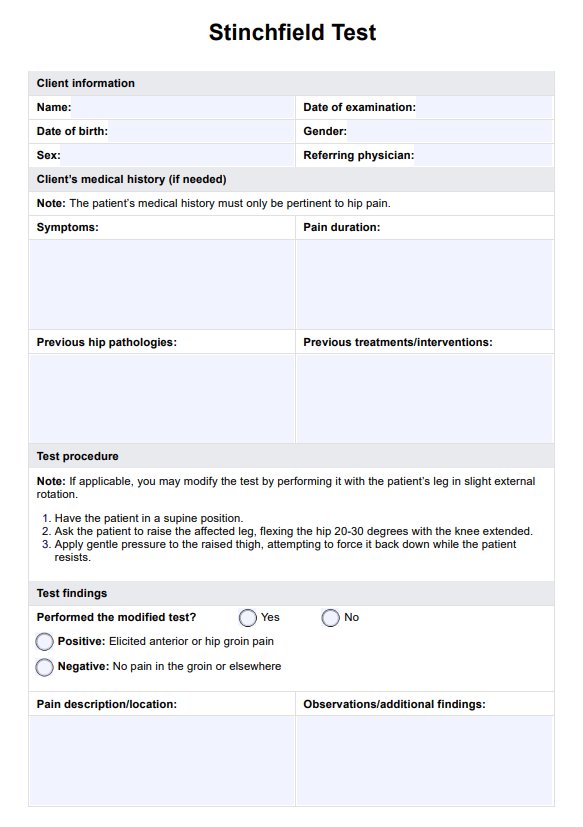Stinchfield Test or the Stichfield Exam is commonly used by orthopedic specialists, physical therapists, general practitioners, sports medicine professionals, and rheumatologists to diagnose and differentiate hip pathologies.

Stinchfield Test
Learn the benefits of the Stinchfield Test and how to perform it with our guide and free downloadable PDF template.
Use Template
Stinchfield Test Template
Commonly asked questions
The Stinchfield Test is used when there's a need to investigate unexplained hip pain, particularly when differentiating between intra-articular and extra-articular hip issues.
The Stinchfield test is performed by placing the patient supine and executing a series of hip flexion and resistance movements. The practitioner assesses pain response and uses the findings to diagnose underlying hip pathologies.
EHR and practice management software
Get started for free
*No credit card required
Free
$0/usd
Unlimited clients
Telehealth
1GB of storage
Client portal text
Automated billing and online payments











